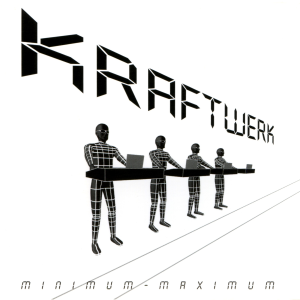cliché question, but hey why not?
Drivers and kernel modules. Debian with “proprietary drivers enabled” works on about as much stuff as Ubuntu without proprietary drivers enabled. I’ve never got it working without issues on a laptop. You’ll definitely be avoiding drivers that probably have government backdoors if you’re using Debian but it comes at a price.
Arch is ironically easier to deal with in this regard. To give credit where credit is due, Debian is very stable. Once you install it on a sever, it won’t break on its own. It may be harder to get all your hardware working but once you do, if you never upgrade you’ll never have to mess with it again.
Debian on desktop, Debian on server, Debian on my VMs and Debian on my containers.
I used to use Fedora and CentOS, then Fedora and Alma Linux but since RH decided to be evil I decided to go full community distro.
Debian has actually gotten really usable lately. Bookworm is fantastic and whenever I want a newer version of something I use Flatpak knowing that the base below is rock solid.
Debian Stable. It doesn’t break with updates, it doesn’t break when I try to customize it, it has all the software you could ever want, and it just works. It’s robust, elegant, and free forever.
For most people I’d recommend a derivative like Mint, Q4OS, or SpiralLinux, since those smooth out a sometimes annoying setup process, but for me vanilla Debian is perfect.
I’m on OpenSuse Tumbleweed right now.
I got tired of updating version numbers on Mint.
As a side note, just plugged in a years-old random printer/scanner combo my roommate had been trying to find driver’s for, for hours, on his windows machine. It just worked immediately in Linux, didn’t need to download anything. Suck it, printer!
+1 to tumbleweed! I hopped between popOS, Kubuntu, and others before finding the I really enjoy the customizability and the file system of openSUSE. Any time I break anything I can just roll back!
I use Pop OS. Used to be big into tinkering and use Arch and all that which I still love but when I was setting up my gaming PC recently I just wanted to install something quick that worked well. It’s been great so far for gaming, browsing and the very occasional bit of coding. I wouldn’t say I’m super attached to it or anything but I like it.
Debian, because stability, but I wonder why each major upgrade, the nvidia drivers break forcing me to reinstall. Welcoming advice in that regard.
How are you installing your Nvidia drivers? Are all of your packages from stable?
They are. Its a GT710, rather old and cheap by recent standards, does that have anything to do with it?
Mint, because I’m a basic bitch.
I rub Debian Sid/Unstable on both my desktop and my work laptop’s WSL2 VM. I use Debian for a lot of reasons, but I think one of the biggest is it’s the “lowest common denominator” for the entire tree base and beyond, and thusly works as much.
Some tool only offers Ubuntu install instructions? It’ll work.
Something needs to be installed from source? Any needed build tools are at most an
apt installaway.“Help I can’t figure out why my
systemdservice isn’t starting in Arch”. Pendingsystemdversion incompatibilities, there’s likely nothing Arch-specific about that problem.Debian has always felt like, I dunno, Latin. So many other languages are based on it, or somehow arrived at the same way to word things despite it, and so once you understand it you can mentally tie all kinds of things together when you run into something in a different language (read: OS).
NixOS. I’ve been running Linux since Slackware 1.0, since then have run Debian, LFS, RedHat, CentOS, Gentoo, Arch and Ubuntu. After years of Ubuntu I discovered NixOS and after diving deep into it, have never been happier with a distro. All of my machines and dot files are in a straightforward single language in a git repo. The mutable parts of all my applications are nicely isolated and backed up and I can make changes to my systems fearlessly. It has a very steep learning curve, but it’s amazing.
NixOS
Whenever my system is in an incorrect shape, I can not only roll back to a previous one, I can go back several updates ago. But an update on NixOS could be a system package installation or a settings change.
My system settings are all in two files, both in git. There’s also the versions of all of my packages that are installed into the store, each with versioned dependencies, but not globally installed so they don’t conflict with each other. This is why I can have a rolling system using the stable wine version.
I also found out packaging is not so difficult so I’ve actually successfully packaged some of the software I use
Mint. I didn’t want to fuss around with my computer too much, I just wanted to come from form work, hit power and go. Like others here, 10 years ago I was down to tinker, but now I just want things to work.
After hopping between the plug-n-play distros, Mint worked the best with my config.I might try other distros but I always come back to Debian.
I use Arch, btw. And PopOS and NixOS.
I’m still a pretty new Linux user.
Been running EndeavourOS for over 2 months because it’s the distro I’ve had the least amount of problems with.
I ran PopOS for 3 weeks before but experienced a lot of audio issues and had my install break to a point I couldn’t recover it. Glad I gave Linux a 2nd try after that, I haven’t had to switch to my Windows drive a single time since installing Endeavour.





